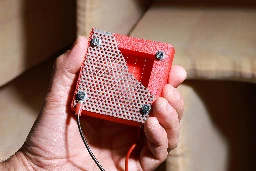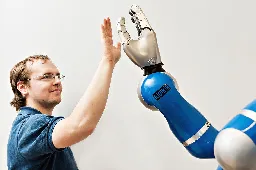
Futurology
- New study simulates gravitational waves from failing warp drivephys.org New study simulates gravitational waves from failing warp drive
Imagine a spaceship driven not by engines, but by compressing the spacetime in front of it. That's the realm of science fiction, right? Well, not entirely. Physicists have been exploring the theoretical possibility of "warp drives" for decades, and a new study published in the Open Journal of Astrop...

- Injectable goo could fix joints without surgery, early study suggestswww.livescience.com Injectable goo could fix joints without surgery, early study suggests
New research shows that an injectable goo can repair cartilage damage in animals' joints within six months. Scientists are now developing the tech for use in humans.
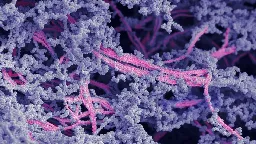
- The Hyperloop might be a good idea maybe a 100 years from now
HEAR ME OUT BEFORE YOU DOWNVOTE.
Disclaimer: The hyperloop is an absolutely shit idea right now. I do not support building in any form right now.
Now to the shower thought: Theoretically, a hyperloop can get you from place A to place B on the planet in less than 40 min (back of the napkin calculations assuming constant acceleration and deceleration of around 1G). Being completely underground (more on that below), it would also be a really good piece of infrastructure safe from arial/orbital bombardment.
Now to the obvious problems: We need the tube to be very very straight to achieve high speeds without killing our passengers. We would want the hyperloop to enter city centers. Building such a straight thing in city centers would require a lot of demolition. Therefore, we would have to get it underground. Bringing it on the ground again outside cities doesn’t make sense because we would be introducing steep upward curves, thus reducing its maximum speed. Therefore, it makes sense to build this thing completely underground. Building underground also gives us many more benefits like not having to do much land acquisition, safety from violent attacks and so on.
Our tube would have to be incredibly airtight. It absolutely cannot have any leaks anywhere. Also, we need to be able to achieve incredibly low chamber pressures and maintain them.
If we are building this underground, we would need a shit load of energy to dig and transport the material outside the tunnel. We would also need a shit load of steel and other resources for these incredibly long tunnels.
Where do we get this energy? Where do we mine these resources without destroying the planet? Now this is where the “future” part comes in. We would need energy to be incredibly cheap. The only viable long term method (by “long term”, I mean it from the civilization time scale) would be via nuclear fusion. When is nuclear fusion happening? Well, it’s only 30 years away! /s Jokes aside, the energy source might be when nuclear fusion not only becomes possible, but also incredibly cheap (the nuclear reactor shouldn’t cost billions lol).
About the resources? Well, we probably need to mine them on the moon, no? The moon has A LOT of them right on the surface. If we can mine them and send them back home, we solve our resources problem!
Well, you might ask- doesn’t it make more sense to just have spaceships with engines propelled by nuclear fusion that exit the atmosphere, go at hypersonic speeds and then drop in? Why build expensive underground continent spanning tunnels? Well, what if we are attacked by aliens? They could easily blockade our airspace. Hell, just dropping a few million stealthy pebbles in our lower orbits would be enough to stop all hypersonic travel (the risk of ships exploding on contact with these pebbles would be too high for air travel to continue). Hypersonic spaceships would also face the problem of traditional aircrafts- you would need to build spaceports far from city centers. These spaceports would require a lot of space and cause a tremendous amount of noise pollution (constant sonic booms for every launch and landing).
Therefore, I think I have made my mind. I think I would be voting for a hyperloop proposal that possibly would be tabled in our direct democratic government a 100-150 years from now!
- World's 1st 'tooth regrowth medicine' to be tested in Japan from Sept. 2024mainichi.jp World's 1st 'tooth regrowth medicine' to be tested in Japan from Sept. 2024 - The Mainichi
OSAKA -- Clinical trials of the world's first

- Stretchable e-skin could give robots human-level touch sensitivitytechxplore.com Stretchable e-skin could give robots human-level touch sensitivity
A first-ever stretchy electronic skin could equip robots and other devices with the same softness and touch sensitivity as human skin, opening up new possibilities to perform tasks that require a great deal of precision and control of force.

- RuPaul Building Fortified Compound to Withstand "Cycle of Destruction"futurism.com RuPaul Building Fortified Compound to Withstand "Cycle of Destruction"
In a new interview, drag superstar RuPaul Andre Charles dishes on a variety of topics -- including his fortified compound.

- EVs and hybrids had a noticeable effect on US fuel consumption, says EPA | Ars Technicaarstechnica.com EVs and hybrids had a noticeable effect on US fuel consumption, says EPA
Model-year 2022 cars, crossovers, and yes, even SUVs are the most-efficient, ever.

- Wind turbines generate more than half of UK’s electricity due to Storm Pia | Wind power | The Guardianwww.theguardian.com Wind turbines generate more than half of UK’s electricity due to Storm Pia
Clean energy record set after windfarms generate 21.8GW in half an hour on Thursday morning

- Nanowire 'brain' network learns and remembers 'on the fly'phys.org Nanowire 'brain' network learns and remembers 'on the fly'
For the first time, a physical neural network has successfully been shown to learn and remember "on the fly," in a way inspired by and similar to how the brain's neurons work.

- Revolutionary Bionic Hand Fuses With Woman's Bones, Muscles, And Nerveswww.sciencealert.com Revolutionary Bionic Hand Fuses With Woman's Bones, Muscles, And Nerves
A 50-year-old Swedish woman who lost her hand in a farming accident has been fitted with a cutting-edge prosthesis that has proved transformational.

- Some deaf children in China can hear after gene treatmentwww.technologyreview.com Some deaf children in China can hear after gene treatment
After gene therapy, Yiyi can hear her mother and dance to the music. But why is it so noisy at night?

jaettu ristiin yhteisöstä: https://lemmy.world/post/7524653
> Some deaf children in China can hear after gene treatment::She can hear her mother and dance to the music. But why is it so noisy at night?
- Radical Energy Abundancecaseyhandmer.wordpress.com Radical Energy Abundance
Originally published at Roots of Progress, based on this thread. Everyone knows the industrial revolution occurred centuries ago and involved steam engines. That was just the warm up. We are now a …
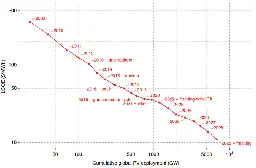
- Rice-engineered material can reconnect severed nervesnews.rice.edu Rice-engineered material can reconnect severed nerves
Rice neuroengineers designed the first self-rectifying magnetoelectric material and showed it can not only precisely stimulate neurons remotely but also reconnect a broken sciatic nerve in a rat model.
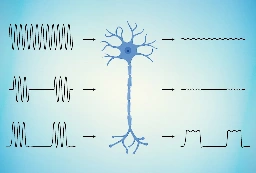
- Throwback Thursday! 05/10

The weekly Throwback Thursday thread! A place to discuss past predictions of the future and their outcomes.
- Why the Pentagon’s ‘killer robots’ are spurring major concernsthehill.com Why the Pentagon’s ‘killer robots’ are spurring major concerns
As the Defense Department is pushing aggressively to modernize its forces using fully autonomous drones and weapons systems, critics fear the start of a new arms race that could dramatically raise …

- Astronomer: If Earth Is Average, We Should Find Alien Life Within 60 Light-Yearswww.sciencealert.com Astronomer: If Earth Is Average, We Should Find Alien Life Within 60 Light-Years
In 1960, while preparing for the first meeting on the Search for Extraterrestrial Intelligence (SETI), legendary astronomer and SETI pioneer Dr.

- Throwback Thursdays! 28/09
Let’s start a new thing! Throwback Thursday, a pinned weekly post where we can discuss past predictions and how accurate they were now that we are living in the future!
What happened to the Moller Sky Car? Are our Jetsons video watches available sooner than we thought they’d be? Where’s my domestic household nuclear reactor?
- Why build megastructures? Just move planets around to make habitable worldsphys.org Why build megastructures? Just move planets around to make habitable worlds
In 1960, Freeman Dyson proposed how advanced civilizations could create megastructures that enclosed their system, allowing them to harness all of their star's energy and multiplying the habitable space they could occupy. In 2015, the astronomical community was intrigued when the star KIC 8462852 (a...

- China plans giant particle accelerator-powered chip factoryinterestingengineering.com China plans giant particle accelerator-powered chip factory
Researchers at Tsinghua University in China have developed a new lithography process to help boost the Chinese semiconductor industry.
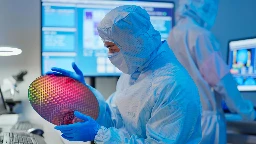
- How will you get along with the new person at work, when that person is a robot?
Cobot: Coworker Robot. How do you think we will fare when the ‘new guy’ at work is a machine? As these machines become increasingly intelligent and closer to sentience, how will we share the spoils of our labour? Will we have the same rights in the workplace?
- “He’s more machine now, than man” What will we do with obsolete brain implants?ia.acs.org.au What happens to obsolete brain implants?
The broader implications of brain-computer interfaces
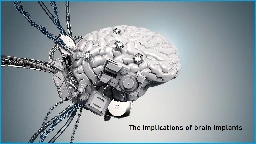
As the field of implantable brain devices moves in leaps and bounds, there will come a time in the future when we will need to consider obsolescence of these devices, and as the implants grow in complexity and scope, will we eventually have to redefine our idea of what it is to be human?
- Categorising the future risks of suffering80000hours.org ‘S-risks’
People working on *suffering risks* or *s-risks* attempt to reduce the risk of something causing vastly more suffering than has existed on Earth so far. We think research to work out how to mitigate these risks might be particularly important. You may also be able to do important work by building th...

This article proffers a fascinating matrix by which we can categorise and stratify the risk of suffering as a community in the future. Could this be the root of a new real-life Asimovian Psychohistory?
- Scientists successfully maneuver robot through living lung tissue | Science Dailywww.sciencedaily.com Scientists successfully maneuver robot through living lung tissue
Scientists have shown that their steerable lung robot can autonomously maneuver the intricacies of the lung, while avoiding important lung structures.

- AI Can Already Design Better Cities Than Humans, Study Showswww.sciencealert.com AI Can Already Design Better Cities Than Humans, Study Shows
Imagine living in a cool, green city flush with parks and threaded with footpaths, bike lanes, and buses, which ferry people to shops, schools, and service centers in a matter of minutes.
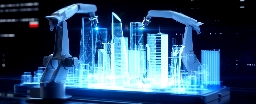
- Engineered compound shows promise in preventing bone loss in spacephys.org Engineered compound shows promise in preventing bone loss in space
A study published in npj Microgravity, finds an engineered compound given to mice aboard the International Space Station (ISS) largely prevented the bone loss associated with time spent in space.

- Humans may soon understand how to communicate with animals. It could raise ethical dilemmas
An interesting article describing the first very real steps towards a linguistic exchange of ideas with an animal; perhaps the non-human intelligence we have been seeking was right beside us the whole time
- Storms and sea level rise could cost ports billionswww.theverge.com Storms and sea level rise could cost ports billions
Already overwhelmed ports could face new risks.
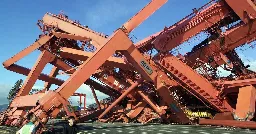
- Musk’s Neuralink seeks volunteers for brain implants—who’s in?arstechnica.com Musk’s Neuralink seeks volunteers for brain implants—who’s in?
The trial aims to help people with quadriplegia control a computer cursor or keyboard.

- The Controversial Future of Genetic Testing

YouTube Video
Click to view this content.
In the future it may be commonplace to genetically test an embryo for the likelihood of certain diseases, but the technology can do so much more; where do we draw the line?
- Future of food: what's on the menu in 2050
Should insect protein become the dietary norm of the future, how will our descendants feel about our reactions to the first insect aisle in the local supermarket? Could we perhaps be the last generation to be seen as true meat eaters?
- The future of lithium battery recycling
Lithium extraction from batteries has so far proven to be notoriously difficult; this recently published paper outlines a novel method of extraction which may have a great impacts on how we manage lithium resources as the demand for power storage continues to surge.
- ChatGPT Isn't Coming for Your Coding Jobwww.wired.com ChatGPT Isn't Coming for Your Coding Job
New technologies have long promised to make human software engineers redundant. But developers have only gotten more important over time.

While we are locked once again in a heated debate about the future of our professions in the wake of ChatGPT, this article digs deep in to our past to reveal similar discussions surrounding of advancements in computer programming throughout history
- Water on the Moon and the civilizations of the futureenglish.elpais.com Water on the Moon and the civilizations of the future
The origin of the water that our satellite contains is unknown, but the process of deciphering it will provide clues about how it arrived on Earth

- Scientists Reveal How Many People You'd Need to Colonize Marswww.sciencealert.com Scientists Reveal How Many People You'd Need to Colonize Mars
As few as 22 people could sustain a colony of pioneers long enough to establish a human presence on Mars.

- Many people feel they work in pointless, meaningless jobs, research confirmsphys.org Many people feel they work in pointless, meaningless jobs, research confirms
The theory that many people feel the work they do is pointless because their jobs are "bullshit" has been confirmed by a new study.

- Research team takes neuromorphic computing a step forwardphys.org Research team takes neuromorphic computing a step forward
Neuromorphic computers do not calculate using zeros and ones. They instead use physical phenomena to detect patterns in large data streams at blazing fast speed and in an extremely energy-efficient manner.

- The latest weapon against climate change is concretetech.eu The latest weapon against climate change is concrete
Silicate, a Dublin-based company, is pioneering the concept of enhanced weathering by converting surplus concrete into a low-cost carbon removal tool.

- The boom of the anti-aging market: How to get people to live to be 120 (and in good health)english.elpais.com The boom of the anti-aging market: How to get people to live to be 120 (and in good health)
This thriving industry — which aims to reverse or delay age-related disease — will be worth around $610 billion globally by 2025

- New plasma-based noise cancelling tech may silence rooms, planes, and even carsbgr.com New plasma-based noise cancelling tech may silence rooms, planes, and even cars
Researchers at the EPFL Acoustic Group have come up with a crazy plasma-based noise cancelling tech that could revolutionize the audio world.
